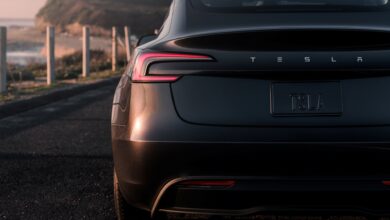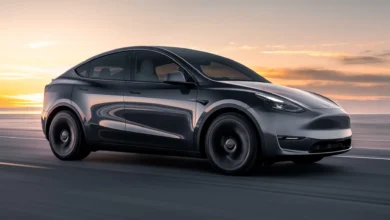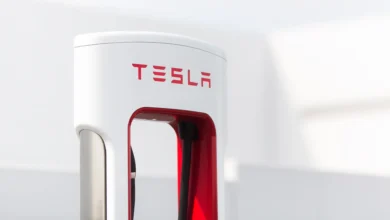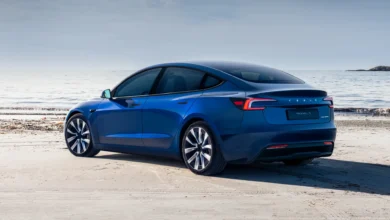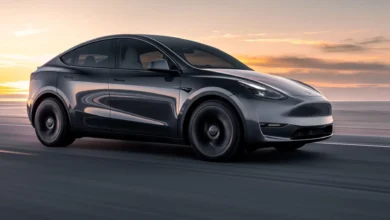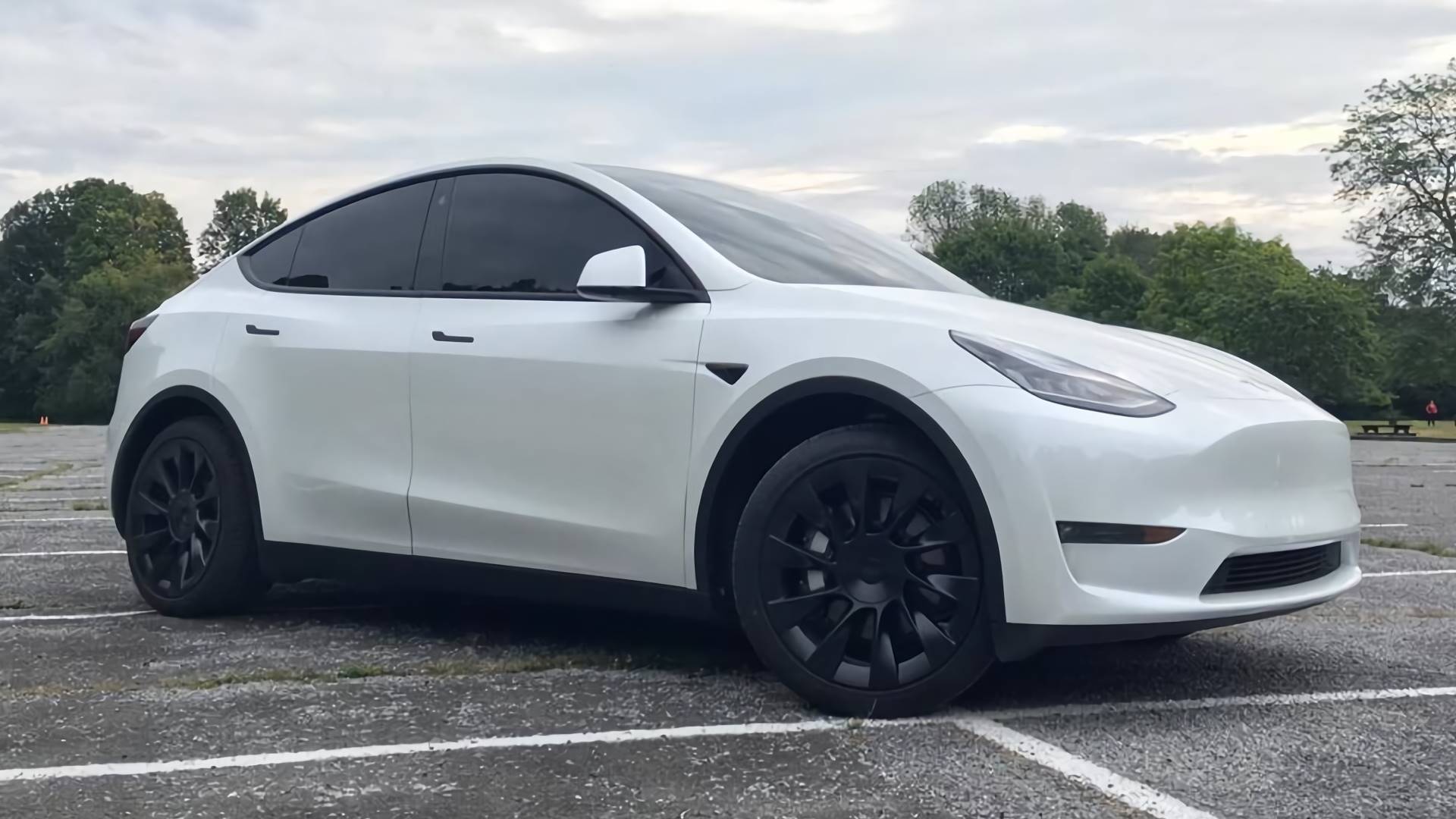
The Tesla Model Y is already on European roads. It is the second SUV of the Californian brand, smaller and less expensive than the Tesla Model X, which is presented as a somewhat cheaper option for families. We have tested it for 3 days, as a couple and with a baby, to see how familiar this new model is.
For this test, carried out on the banks of the Hudson River, on the border between the states of New York and New Jersey (United States), we have a Great Autonomy version of the Tesla Model Y, which on paper offers a range of 505 km (WLTP cycle). With a dual 4-wheel drive motor it can reach 100 km / h in just 5 seconds. This model starts at 64,000 euros, a price to which we must add the possible extras.
The model in question is pearl white, which is not an extra in the price (other colors are 1,000 or 2,000 euros more) and it is fitted with 20-inch Induction wheels (+2,100 euros). The interior is black synthetic leather. A white interior would add 1,050 euros to the unit.
Sport Utility Vehicles (SUVs) have grown in popularity in recent years. That’s why the Tesla Model Y is destined to be the best seller in the house. It is a crossover since it shares the base with the Tesla Model 3 which is a saloon, and to be an SUV it should inherit the chassis of a truck or pickup. In any case, sales were guaranteed since its launch, and in recent months it has reached the number of deliveries to the Tesla Model 3.
The design has the recognizable Tesla style, with the raised, pointed front end, the stretched headlights, and the large front windshield. It is very similar to the Tesla Model 3, but it can also be confused with a Model X because of its height, 20 centimeters higher than the saloon, 5 centimeters lower than the Model X. Despite its greater height, it only gains 2, 8 cm of ground clearance compared to the Model 3 and the front spoiler or diffuser suffers a lot from curbs when parking.
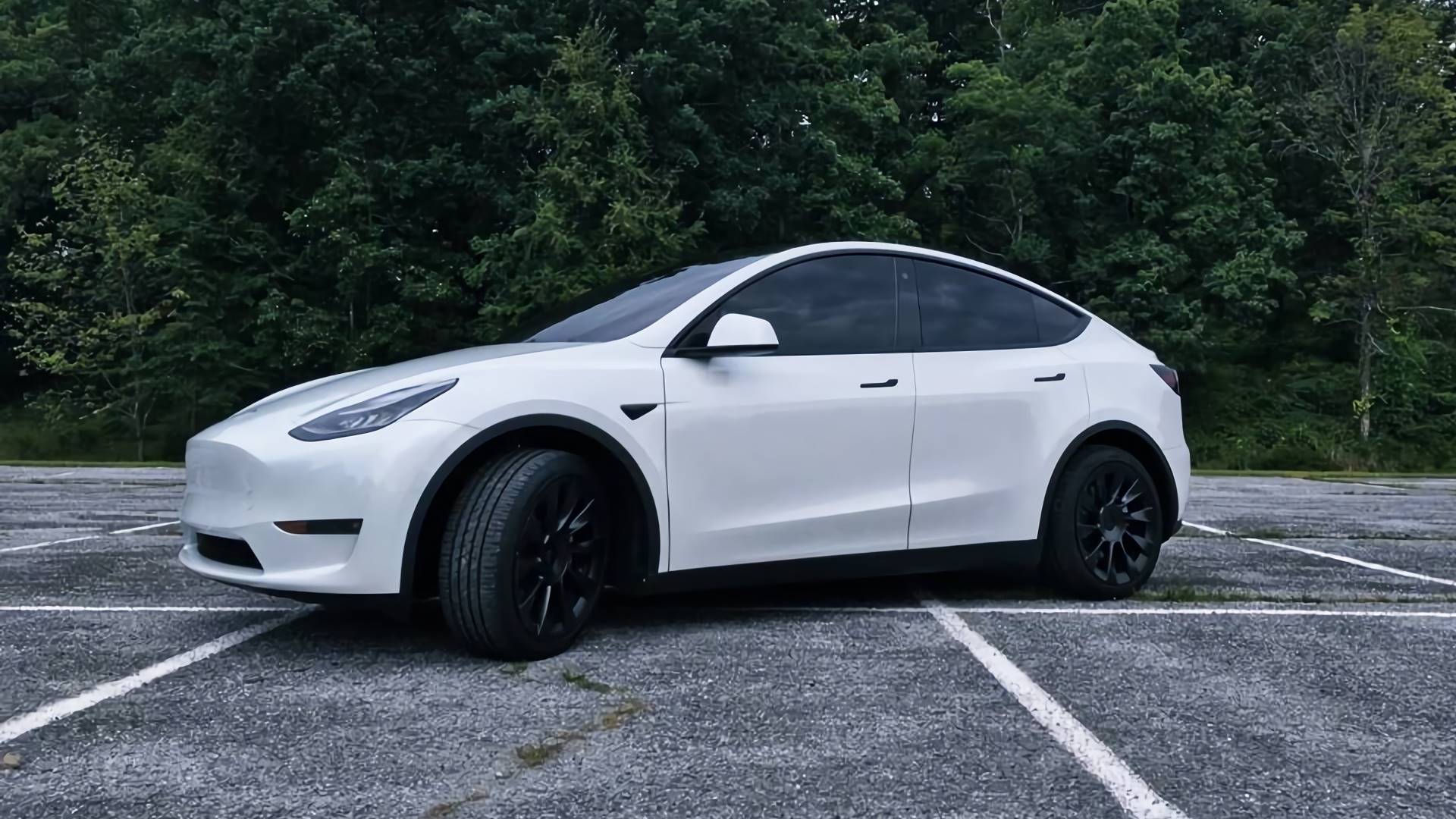
In general, it is very similar to the Model 3, since they share 75% of the parts. Outwardly, one of the clearest differences is the wheel arch, larger and with black plastic trim. Another aesthetic difference with the Model 3 is the elimination of chrome. A much-discussed and necessary change with the onion in the potato omelet and that luckily has also reached the saloon. A hardly noticeable difference is the size of the mirrors, taller and narrower, and probably smaller, but with sufficient visibility. They keep the door handles that make any newcomer passenger feel useless, but like everything else, you get used to it.
It has improved, of course, the opening and especially the closing of the front doors, which almost always close on their own by dropping them. But curiously, the rear doors require a good push to close, an annoying difference.
Tesla Model Y Interior
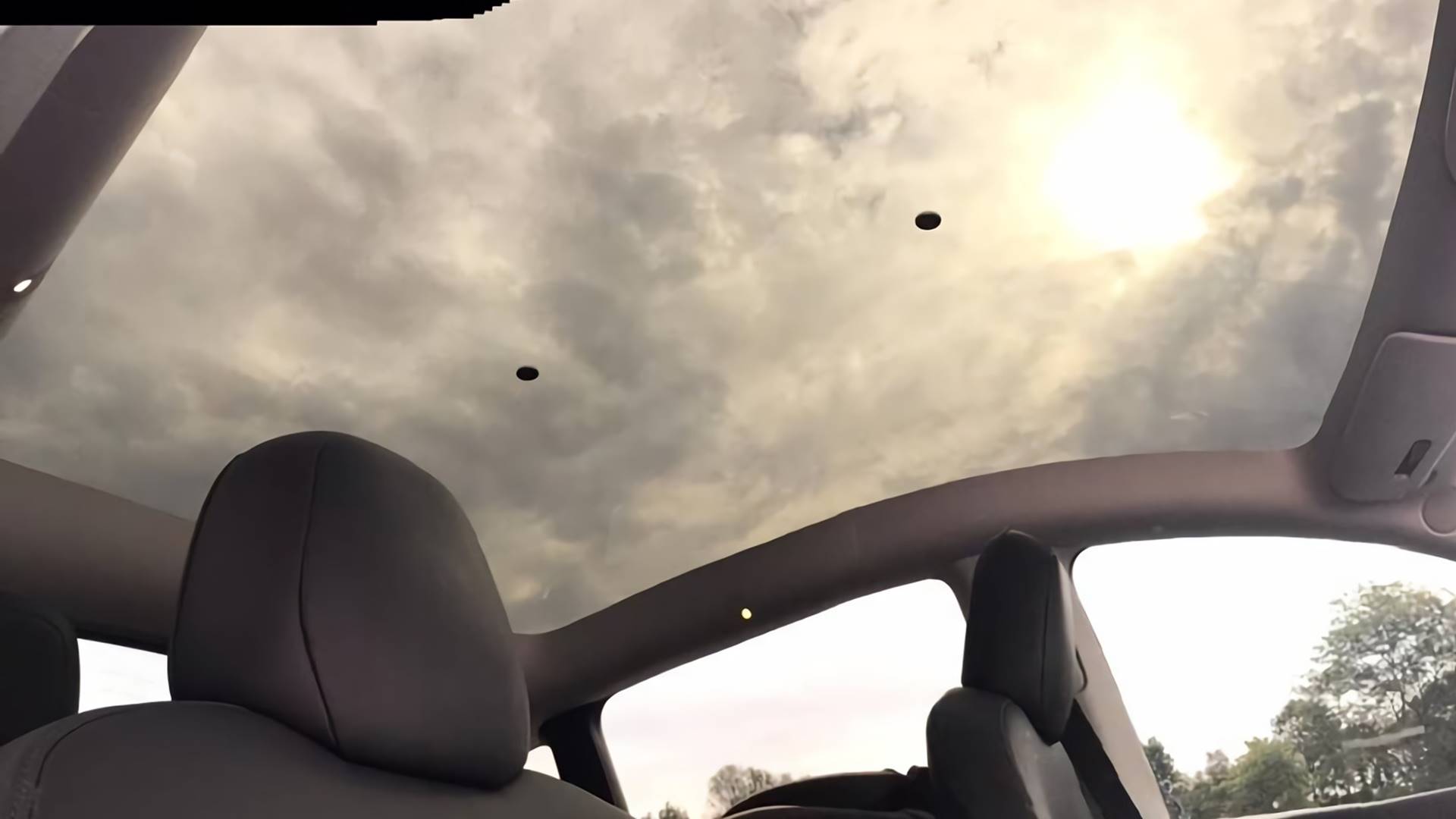
For the test, we had a smart key (180 euros) held by a rubber key ring (20 euros) that allows us to open the vehicle just by approaching. The system works very well. The vehicle closes only when we are a couple of meters apart, makes acoustic and light signals, and folds the mirrors. As we approach it, it will open again, but it will close if we do not open any doors. To open, just touch the handles, although sometimes it takes a second to react. Compared to other brands that often fail or do not react in time, this part seemed very successful to us.
Accessing the vehicle is easier than in the Model 3, being taller. The “Easy entry” function makes it even easier, which moves the seat back and folds the steering wheel. This function (apparently also available in the Model 3) can be adjusted if a baby seat is placed in the back seat, something that we took to discover. Once inside, from the front seats, the difference with the Model 3 is practically nil.
From the rear seats, on the other hand, a greater height is noticeable and the absence of the rear roof crosspiece above our heads is appreciated, leaving a full glass roof. This chassis reinforcement has been moved behind the seats, significantly reducing visibility through the interior mirror, as there is an unexpectedly small gap for a vehicle with such a large tailgate.
The interior lighting is quite poor, insufficient in many cases. It has two small LEDs in the front center part of the roof, and one on each side above the rear doors. In addition, there is an ambient light under the glove compartment that does not give much atmosphere either.
The large 15-inch central screen is what illuminates the most. In addition, it encloses all the controls and functions of the vehicle, except the button for the hazard lights that are located between the courtesy lights. Functions as simple as setting the clean ones are carried out from the screen. The interface is very well thought out so that the most used actions do not require more than two touches. And remember that a large part of the configuration (seats, mirrors, type of driving, navigator, etc.) must be carried out while standing still, in any vehicle, and many other actions are automatic, such as activating the clean ones. Voice commands can also be configured to bypass some functions.
Some controls are also on the steering wheel. Music volume and the cruise control can be adjusted with the thumbwheel-type controls. They are quite comfortable, although very responsive, and on occasion, we have raised the volume of the music by making a tight turn.
From the steering wheel levers, we will select the gears (R, N, D, and P), and we will activate the cruise control and the autopilot. When selecting reverse gear, the rearview mirrors are automatically tilted to better control the sides of the vehicle. Something that I have found curious, but not very useful since the visibility of the road is lost. In any case, the maneuver is controlled from the screen with the cameras. A curious detail, the shift lever on the steering column seemed “curious and old-fashioned” to an American passenger. “Something more typical of vans” he commented. Although he said he missed the shifter on a first impression, he liked the configuration of the center console.
As with other Tesla models, we can configure some driving parameters from the screen, such as acceleration, steering wheel response, and brake behavior. The first two options have a clear impact on the vehicle. It is not like the ECO mode that other brands carry. The change is noticeable, and passengers will especially notice it since acceleration and cornering in its most sporty modes can be abrupt. As for the behavior of the brakes, while driving, it will be determined how the vehicle behaves when stopped and when braking.
You can choose a behavior similar to that of an automatic (Slow or Creep), which moves slowly when you release the pedals; like a manual that is dropped (Roll or Roll); or it can be selected to hold the position (Hold or Hold). This last option takes full advantage of regenerative braking and it is possible to control the car with a single pedal, even stopping just by lifting the foot off the accelerator, and at a distance similar to what we normally achieve with the brake. This configuration can only be changed with the vehicle in P. Unfortunately, the suspension cannot be changed, which we found to be excessively hard for a vehicle in principle family.
We have not been able to enjoy the Autopilot with Navigation that we have been able to see in other Tesla units. The Model Y that we had during the test had assistance functions similar to other brands such as lane-keeping and adaptive cruise speed. But he was not able to change lanes or take an exit as he did not have the FSD pack activated.
Within the security systems, the Model Y has the collision warning and, in principle, the blind spot. And I say in principle because, although it was configured to give an audible warning, it never did. It also does not have a light signal in the rearview mirror like many other manufacturers. When marking the turn signal with a vehicle in the blind spot, the screen indicates it by changing the lines of the drawing to read. Something was insufficient, especially with the obstacle on the left side, and that was not always right.
To this must be added numerous inaccuracies in the virtual representation of the vehicle’s environment, with objects that disappear, cars that turn 180 degrees at a standstill, and some wrong-colored traffic lights. A few months ago it was rumored that Tesla was eliminating radars and focusing on vision navigation. We believe that the unit in question did not have a radar or ultrasonic sensor and was, therefore, unable to correctly determine if there was an obstacle outside our field of vision. All in all, we don’t miss the Autopilot with navigation for this test.
Tesla Model Y Driving
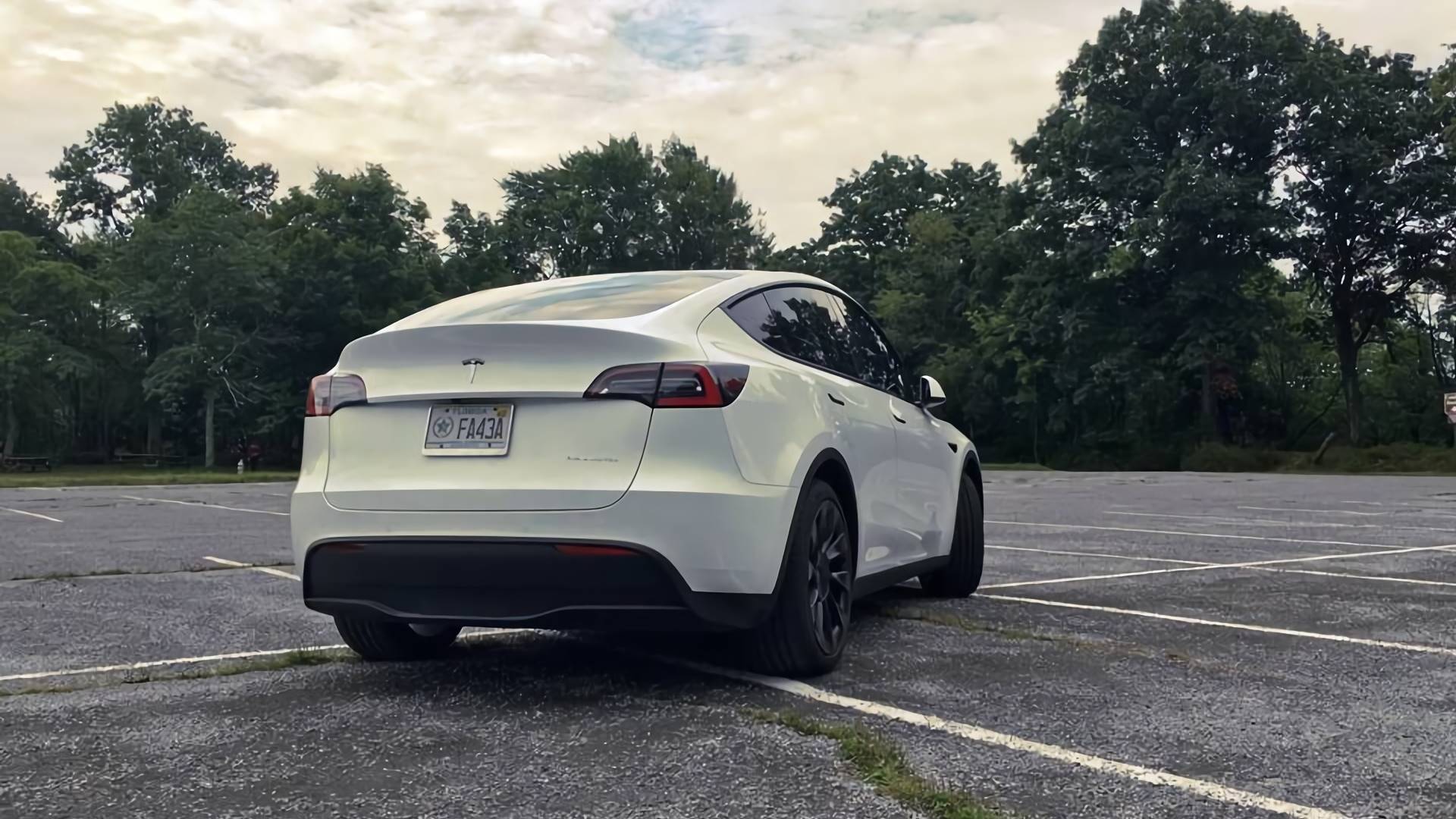
And in any case, driving the Tesla Model Y is enjoyable. Immediate throttle response and solid push up to 100 km / h give a great sense of control and security. Most of the test is carried out in Hold mode in which the accelerator and regenerative brake work together, maximizing the efficiency of this. What is called driving a pedal is also achieved, in which we can drive without resorting to the brake.
The regenerative brake is strong enough to stop the vehicle in a few meters. There are two situations in which the regenerative brake force is greatly reduced. When the battery is below 14ºC, and when the battery is highly charged. The vehicle warns that this may be limited, but it does not always do so, which seems to us something dangerous or to correct.
The seat is comfortable, with sufficient support, and not excessively soft. The screen is easy to operate, although the GPS is not as clear as an Android Google Maps can be, and it is slightly out of sight. There is plenty of storage space in the center console and the wireless charging tray is also useful for other items.
In the passenger position, there is plenty of legroom. It even allows you to lift them more than usual. At the rear, the absence of the central tunnel is both practical and aesthetic. The rear seats are slightly low, which added to the height of the front seatbacks deprives rear-seat passengers of considerable visibility. The test unit did not have a third row of seats.
The trunk is huge. It is leveled at the height of the tailgate and the rear seats so that when folded the floor is flat. Under the base of the boot, there are two more compartments, totaling almost 2,000 liters of cargo. It even takes advantage of the recesses behind the wheels, with two compartments in which a 5-liter jug can easily fit. The frunk, or front trunk, has about 100 liters of cargo and allows to isolate and secure the load much better. It is also easy to clean as it does not have a carpet. The closure has changed a bit compared to the Model 3 since it has a rubber or seal on the hood. It also opens and closes much better than the sedan.
Consumption and autonomy
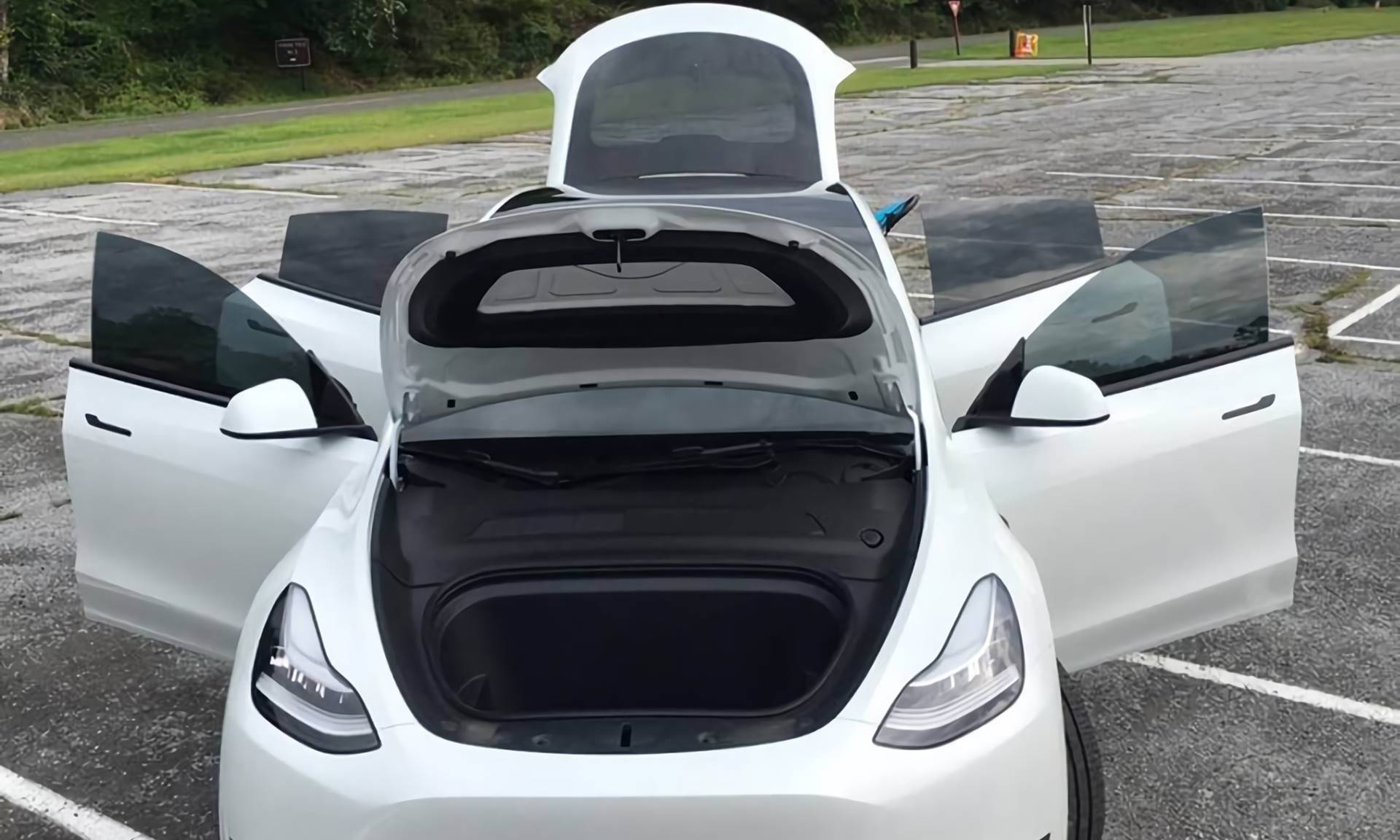
We make two long journeys, always with the air conditioning at 22ºC. One of 200 km, 90% highway and with an outside temperature between 25 ºC and 30 ºC, in which the consumption of the vehicle is around 14 kWh at 100 km, which gives a projection of 540 km of autonomy for the complete battery, which would improve the figures of the EPA cycle, which gives 526 km, and that our unit is equipped with the 20-inch wheels, while the EPA has tested the 19-inch, so in the same circumstances, the differences would be even greater in our favor.
We have also made a route of 120 km with 50% of mountain roads and an outdoor temperature close to 20 ºC, and in which consumption rose above 15 kWh at 100 km, which would also mean approaching homologation figures, but in all cases significantly improve some WLTP figures that have become obsolete with their 505 km.
Curiously, in the city, the consumption of our Model Y rose to 17-18 kWh / 100 km, which reduces the autonomy to almost 400 km for 75 kWh. During each night, without plugging in, the vehicle lost between 5 and 8 km on the scoreboard due to “vampire” consumption.
To load we use 3 different options. A 7.3 kW ChargePoint charger, for which they charged us $ 1.6 per hour, and for which we need an adapter. A Tesla urban fast charger at 50 kW and a Tesla Supercharger at 250 kW, although during charging I do not exceed 144 kW of maximum power. Taking into account any of the 3 options gave a similar price in terms of dollars per km, which is not much lower than what we will pay with a combustion SUV in the United States, where gasoline is at 60 cents a liter. But in Europe the accounts are different.
Opinions of testers
Passenger parent: The Tesla Model Y is very nice, very big, and very fast. But it is not comfortable, especially in the rear. The seats are not particularly comfortable and the suspension is excessively stiff. The view from the rear seat is practically nil, although the glass roof is wonderful. The ventilation works very well and can be configured to come from the front vents, which improves the climate. Opening the rear door ends up being annoying, as it takes a good hit to close. It’s noticeably lower than other SUVs, but this is America and there are real roadblocks. Verdict: Don’t buy.
Baby’s Opinion (1-year-old): The roof looks interesting, but something has to be done about the front seat hitting every time the driver gets out. Despite the absence of engine vibrations, you can sleep, but every bump, every time a door is closed, there is a risk of waking up the little beast. Verdict: I hate cars, I want to ride my bike.
Driver parent: The Isofix is one of the most comfortable that I have tried, the anchor is more accessible, and installing the chair was very quick, but tightening it not so much, because the seat is harder than in other cars. A hands-free trunk release (per kick) is missed and would be much more practical if the tailgate lock button were on the driver’s side. The tailgate to the base of the trunk makes it very easy to load the stroller. Using the front door and then the back door makes the difference between the two very clear, it’s annoying. Verdict: Buy and have another SUV for the family.
Conclusions: The Tesla Model Y improves in many aspects to the Tesla Model 3. And that without going into technical details in which it also improves its predecessor. It has not convinced us as a car for families, especially due to the stiffness of the suspension and its sporty behavior, although this could improve with smaller rims and more profiled tires. But it’s very spacious and versatile, so with the right roads (New Jersey-NYC is a mess), it could be comfortable. We found it to be an elegant and sporty vehicle, very well finished and fun to drive.
